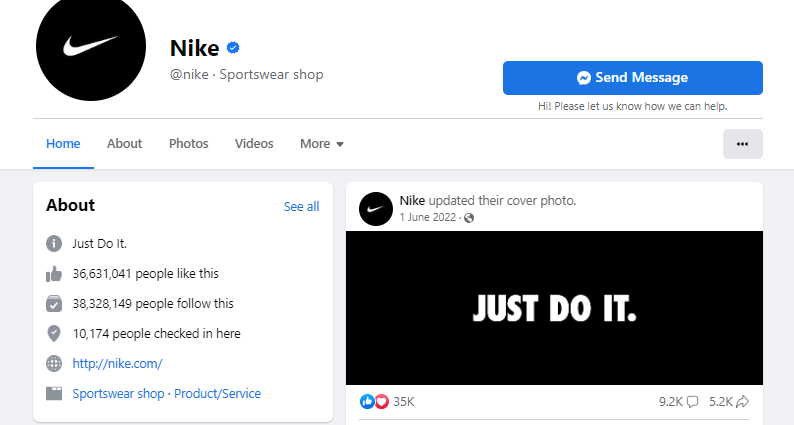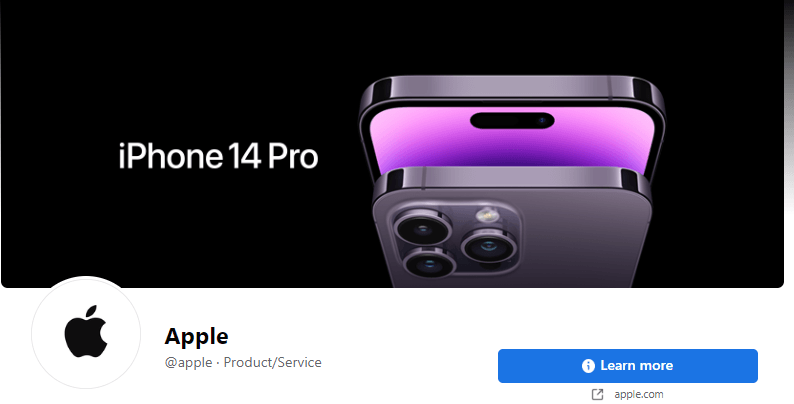-
 Published: Jul 7, 2023
Published: Jul 7, 2023
-
 13 min. read
13 min. read
-
 Sina Mchunu
Sina Mchunu Research & Tech Content Writer
Research & Tech Content Writer
- Sina is a marketing expert who specializes in SEO, AI, and digital marketing content. With over five years of experience, she’s written hundreds of pieces, spanning a variety of topics and industry niches. She loves combining her strong eye for detail and passion for storytelling in her work. You’ll find her fruit picking or horse riding at the local farm when she’s not writing.
Brand health is a brand’s general opinion and standing among its intended market. It incorporates brand recognition, loyalty, equity, and the ability to stand out.
Knowing how your brand is regarded in the marketplace and by its intended audience is essential for marketers. A company with a good reputation would draw more clients, but a bad reputation could result in falling sales and income.
This guide delves into what constitutes a healthy brand and offers advice on boosting your brand’s perception. Here’s a summary of this article:
- What is brand health?
- What constitutes a healthy brand?
- Brand health metrics
- How to measure brand health
- Examples of healthy brands
Let’s get the ball rolling!
Don’t miss our Marketing Manager Insider emails!
Join 200K smart marketers for the hottest marketing news and insights in your inbox.
Inline Subscription Form
“*” indicates required fields


What is brand health?
Brand health is an indication of how well the target market perceives it and how likely they will continue to interact with it. It considers several variables — consumer satisfaction, brand recognition, and loyalty.
What constitutes a healthy brand?
A healthy brand is one that always upholds its core values and always clearly communicates its message. It’s instantly identifiable and evokes warm feelings in the minds of its viewers. It has to project an image of dependability and trustworthiness to its core customer base.
For instance, Apple is a successful company with a strong brand because it regularly releases cutting-edge and simple-to-use gadgets. Its marketing has succeeded by appealing to the sensibilities of those who appreciate understatement and class. The company’s focus on design and user experience boosts Apple’s reputation for quality.
In addition, a healthy brand is flexible enough to adjust to shifting tastes and preferences. It also attracts and retains customers while meeting the market’s demands.
Key brand health metrics
Your company needs to monitor several critical brand health metrics to conduct in-depth analyses, thorough market research, and make educated decisions and investments to help build and strengthen your brand and business. These metrics may include:
- Market share
- Net promoter score (NPS)
- Brand sentiment
- Brand awareness
- Customer acquisition
- Customer retention rate
1. Market share
A brand’s market share is the percentage of a market’s overall sales that your business represents. It indicates where your brand sits in the market and how it compares to the competitors.
Monitoring your brand’s market share over time will demonstrate if you’re gaining or losing ground to competitors, enabling you to make strategic resource allocation decisions.
Knowing your brand’s market share can also help you foresee and prepare for business challenges like the entry of new competitors or a shift in consumer preferences.
2. Net promoter score (NPS)
The NPS is a helpful indicator for monitoring a brand’s health. By posing the straightforward question, “How likely are you to suggest our product or service to a friend or colleague?” this score gauges customer loyalty and satisfaction.
The scale that customers use ranges from 0 (not at all probable) to 10 (extremely likely). Afterward, the responses are classified as either critics (0–6), passives (7-8), and promoters (9-10).
The NPS is calculated as the difference between the proportion of promoters and detractors, yielding a score between -100 and 100. Customers with a high NPS are likely to be enthusiastic promoters of the product or service. In contrast, those with low NPS are more likely to express dissatisfaction and spread the word of their disappointment.
3. Brand sentiment
Brand sentiment assesses brand health by evaluating customers’ emotional attachment to a brand. You can accomplish this through the following:
- Surveys
- Social media monitoring
- Online reviews
- Brand sentiment tools
It can give your business helpful information about consumer perceptions of your brand and assist in evaluating the effectiveness of your advertising campaigns.
Monitoring brand sentiment over time allows you to spot patterns and make data-driven decisions to enhance business performance and reputation.
In addition, you can use brand sentiment to pinpoint weaknesses in a brand and create plans for resolving such problems. Understanding brand emotion is essential to developing a healthy brand and maintaining your competitive advantage in the market.
4. Brand awareness
Brand awareness is a crucial brand health indicator since it gauges consumer familiarity with your brand and the likelihood that they will pick your offerings over those of your rivals. By raising brand awareness, you can improve your company’s reputation and attract more consumers.
One way to gauge brand awareness is to ask clients about their brand awareness and their memory of your name or logo in focus groups or surveys. To monitor online engagement, you can also examine website traffic, social media activity, and search engine results.
Additionally, you can pinpoint problem areas and monitor the effectiveness of your marketing initiatives by routinely measuring brand awareness.
5. Customer acquisition
Customer acquisition analyzes a company’s ability to attract new clients to gauge the brand’s health. It is an essential component of your company since it immediately influences revenue growth and market share.
Acquiring new consumers entails locating possible new clients, engaging with them via various forms of advertising, and ultimately converting them into paying customers. You can accomplish this goal by utilizing strategies such as:
To continuously enhance your approach, measure and evaluate your customer acquisition indicators, such as cost per acquisition and conversion rates. Furthermore, outstanding customer service may improve client retention and lifetime value.
6. Customer retention rate
Customer retention is a vital brand health metric that measures the proportion of customers that stay with a firm over time. A high retention rate means clients are happy with your goods or services and likely to remain loyal to your brand.
Conversely, a low retention rate may indicate unhappiness or a lack of engagement, resulting in lost sales and a poor impression of the company. So, your company needs to focus on enhancing client retention techniques to create lasting connections and boost revenue.
Measuring the metrics that affect your bottom line.
Are you interested in custom reporting that is specific to your unique business needs? Powered by RevenueCloudFX, WebFX creates custom reports based on the metrics that matter most to your company.
- Leads
- Transactions
- Calls
- Revenue

How to measure brand health
Monitoring a brand’s health and identifying development opportunities is one of the most crucial steps in creating a successful one. You need a thorough analysis of all the factors influencing how your brand is perceived in the marketplace to determine brand health.
Let’s look at the five steps below to gauge and monitor your brand’s health over time effectively:
- Determine the metrics
- Gather data on the chosen key performance indicators (KPIs)
- Use statistical analysis and data visualization tools
- Benchmark the brand’s performance against competitors
- Develop strategies to address areas of weakness and capitalize on strengths
Step 1: Determine the metrics
Selecting the metrics you’ll use to assess your brand’s efficacy is the first step in keeping track of its health. These indicators should be precise, quantifiable, and pertinent to the goals and objectives of your brand.
![]()
For instance, measures like customer retention rate, customer satisfaction score, and NPS may be pertinent if your brand’s objective is to enhance customer loyalty. Before beginning any modifications or efforts, it is essential to establish a baseline for each statistic. That way, you can accurately assess the outcomes and choose how to proceed.
Reviewing them regularly and making any required improvements is critical to ensure your metrics support your company goals and objectives. You can adequately measure your brand health by choosing the appropriate metrics and regularly tracking them.
Step 2: Gather data on the chosen key performance indicators (KPIs)
![]()
After deciding on KPIs to gauge the overall brand health, collect data on these metrics. This procedure entails gathering and examining pertinent data from numerous sources, including:
Be sure the information you gather is accurate, trustworthy, and current because any disparities or mistakes might result in incorrect conclusions and poor decision-making. You should also invest in equipment and software to make collecting and evaluating data easier.
Step 3: Use statistical analysis and data visualization tools
Next, examine this data using statistical techniques and tools for data visualization. These tools can aid in detecting patterns and trends in the data and facilitate sharing your conclusions with others.

You can employ a range of statistical analysis methods, including:
- Regression analysis
- Hypothesis testing
- Clustering
Moreover, data visualization tools — charts, graphs, and dashboards — can assist you in clearly and persuasively presenting your results. You can increase your business performance by employing these tools wisely and gaining insightful knowledge about your market and consumers.
Step 4: Benchmark the brand’s performance against competitors
From there, compare your brand’s success to rival brands once you’ve examined your data and gotten a deeper grasp of your market and customers. This approach lets you assess your market position and pinpoint improvement areas.
You can use various metrics to assess how your brand stands out from competitors in your sector, including:
- Market share
- Customer satisfaction
- Brand awareness
By benchmarking your performance, you can develop objectives and plans to strengthen your brand’s position in the market and eventually spur company growth. Remember that you should do benchmarking more than once. You can keep ahead of market trends and adjust to changing customer behavior by routinely assessing your brand’s performance compared to rivals.
Step 5: Develop strategies to address areas of weakness and capitalize on strengths
Now it’s time to create plans to overcome your weaknesses after you’ve determined your comparative strengths and weaknesses over your rivals. This step entails reviewing the information obtained during the earlier processes and creating a list of viable solutions.
Customize your plans to your business’s strengths, limitations, and general aims and objectives. Among the possible approaches are:
- Investing in marketing campaigns to increase brand awareness
- Improving customer service to enhance the customer experience
- Developing new products or services to expand your offerings
The trick is to concentrate on areas that will affect your organization the most and are consistent with your long-term objectives.
For instance, investing in marketing campaigns and creating new goods or services would be the best course of action to boost sales. Conversely, enhancing customer service could be the best answer if you’re having trouble keeping customers.
Learn how we increased traffic by over 40%, and conversions by over 100% for an ecommerce client.
Read the Case Study

Examples of healthy brands
Certain businesses succeed at keeping a good brand reputation. With constant messaging and top-notch goods or services, these companies have established themselves as leaders in their respective sectors and developed devoted consumer bases.
Some of these businesses have weak er market shifts and maintain top-of-mind status with customers by prioritizing their brand image.
Here are some excellent examples of healthy brands:
Nike
Nike is an excellent example of a company that has effectively preserved a favorable reputation. This company has become a market leader in the sports gear sector through strategic marketing initiatives, partnerships, and sponsorships.

Its enduring “just do it” slogan and famous “swoosh” emblem are instantly identifiable, and its dedication to innovation and sustainability has won them the admiration of customers worldwide. Also, Nike’s brand language emphasizes empowerment and encourages people to push themselves to reach their goals, which has improved the perception of its brand.
Coca-Cola
Coca-Cola is another well-known international brand that has effectively built a healthy brand and positive consumer reputation. It has become a household name and a symbol of pleasure and satisfaction with its recognizable red and white logo and catchy catchphrases like “Taste the Feeling” and “Open Happiness.”

In addition to its marketing campaigns, Coca-Cola has participated in several social and environmental projects, improving its image and making it more appealing to customers who prioritize ethics and responsibility.
Whole Foods
Whole Foods has developed a solid reputation among customers for its dedication to organic and sustainable food selections. With the tagline “Whole Foods, Whole People, Whole Planet,” the business has gained popularity among buyers who are concerned about their health and who appreciate openness and moral behavior in the food business.

Whole Foods also offers biodegradable packaging and collaborates with nearby farms to reduce transportation emissions, among other attempts to decrease waste and promote eco-friendliness. Together with improving the environment, these initiatives have drawn a committed clientele that supports the company’s principles.
Apple
By consistently releasing cutting-edge products, Apple has established a position as an industry leader, earning praise for its forward-thinking technologies and sleek designs.
It’s renowned for its advanced technologies and elegant design. Customers who appreciate their online safety have praised it for its dedication to customer privacy and security.

Apple also employs renewable energy in its operations and creates goods utilizing recycled materials to lessen its carbon footprint. The company’s standing as a socially and ecologically responsible brand has benefited from these activities.
Toyota
Toyota’s revolutionary hybrid and electric cars have achieved essential advancements in the automotive sector. With its Prius vehicle, eco-friendliness and fuel economy have become household terms.

As part of its commitment to lowering greenhouse gas emissions, the corporation has adopted sustainable production techniques. Toyota has received praise for its sustainability-related activities from several environmental groups.
We foster and form long-term partnerships so that your business has long-term results.
Over 90%
Improve brand health with WebFX
WebFX recognizes the value of a reputable brand in today’s business climate. That’s why we provide a range of options for enhancing brand health and setting your company apart from the competition.
We have over 3,212,407 hours of expertise — from branding and design to digital marketing and social media management. To ensure our customers thrive in today’s dynamic digital economy, we prioritize efforts with a clear emphasis on outcomes and provide exceptional service.
Contact us online or call 888-601-5359 to learn more about how we can help your business grow and thrive.
-
 Sina is a marketing expert who specializes in SEO, AI, and digital marketing content. With over five years of experience, she’s written hundreds of pieces, spanning a variety of topics and industry niches. She loves combining her strong eye for detail and passion for storytelling in her work. You’ll find her fruit picking or horse riding at the local farm when she’s not writing.
Sina is a marketing expert who specializes in SEO, AI, and digital marketing content. With over five years of experience, she’s written hundreds of pieces, spanning a variety of topics and industry niches. She loves combining her strong eye for detail and passion for storytelling in her work. You’ll find her fruit picking or horse riding at the local farm when she’s not writing. -

WebFX is a full-service marketing agency with 1,100+ client reviews and a 4.9-star rating on Clutch! Find out how our expert team and revenue-accelerating tech can drive results for you! Learn more
Try our free Marketing Calculator
Craft a tailored online marketing strategy! Utilize our free Internet marketing calculator for a custom plan based on your location, reach, timeframe, and budget.
Plan Your Marketing Budget
Table of Contents
- What is brand health?
- What constitutes a healthy brand?
- Key brand health metrics
- 1. Market share
- 2. Net promoter score (NPS)
- 3. Brand sentiment
- 4. Brand awareness
- 5. Customer acquisition
- 6. Customer retention rate
- How to measure brand health
- Step 1: Determine the metrics
- Step 2: Gather data on the chosen key performance indicators (KPIs)
- Step 3: Use statistical analysis and data visualization tools
- Step 4: Benchmark the brand’s performance against competitors
- Step 5: Develop strategies to address areas of weakness and capitalize on strengths
- Examples of healthy brands
- Nike
- Coca-Cola
- Whole Foods
- Apple
- Toyota
- Improve brand health with WebFX

Proven Marketing Strategies

Proven Marketing Strategies
Try our free Marketing Calculator
Craft a tailored online marketing strategy! Utilize our free Internet marketing calculator for a custom plan based on your location, reach, timeframe, and budget.
Plan Your Marketing Budget
What to read next





